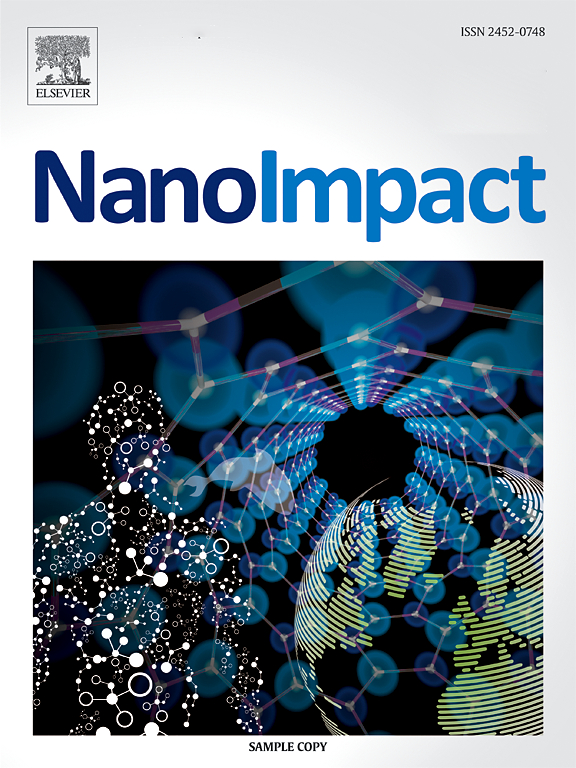Evaluation of inflammatory and mesothelioma-related responses in mice following the intraperitoneal administration of cellulose nanofibers
IF 5.5
3区 环境科学与生态学
Q2 ENVIRONMENTAL SCIENCES
引用次数: 0
Abstract
Mesothelioma can develop from long-term exposure to fine fibrous materials including asbestos and carbon nanotubes, and chronic inflammation is critical for its development. Inflammatory responses and key related markers associated with the development of mesothelioma were evaluated over time in relation to cellulose nanofibers (CNFs), which are being developed as new plant-derived materials, for the purpose of risk management Three types of CNFs, mechanically fibrillated CNFs, TEMPO-oxidized CNFs, and phosphorylated CNFs, were administered intraperitoneally to mice at doses of 0.1 and 1.0 mg per animal, and progress was observed for up to 2 years. In the group receiving mechanically fibrillated CNFs, white substances were observed adhering to the liver surface throughout the observation period. This white substance was presumed to be cellulose. Some CNFs have been shown to persist in the body. During this period, inflammation markers and mesothelioma-related markers were evaluated at 1, 2, and 6 months, and 1, and 2 years after administration. No significant symptoms were observed in animals administered one of the three types of CNFs intraperitoneally during the observation period. Inflammatory markers in the peritoneal lavage fluid remained below the detection limit throughout the entire observation period. Additionally, no significant increase in blood levels of mesothelioma or the major related markers mesothelin, osteopontin, or HMGB1 was observed. In this study, although some CNFs remained in the body, no inflammatory response was observed in vivo under the concentration conditions and observation periods used. Furthermore, no evidence of long-term effects, such as cancer, was found.

腹腔注射纤维素纳米纤维对小鼠炎症和间皮瘤相关反应的评价。
间皮瘤可因长期接触石棉和碳纳米管等细纤维材料而发展,慢性炎症对其发展至关重要。随着时间的推移,研究人员评估了与纤维素纳米纤维(CNFs)相关的炎症反应和与间皮瘤发展相关的关键相关标志物,这种新型植物源性材料正在开发中,用于风险管理。研究人员以每只动物0.1和1.0 mg的剂量向小鼠腹腔注射三种类型的CNFs,机械纤原化CNFs、tempo氧化CNFs和磷酸化CNFs,并观察进展长达2 年。在接受机械原纤化CNFs的组中,观察到整个观察期间肝脏表面都有白色物质粘附。这种白色物质被认为是纤维素。一些CNFs已被证明在体内持续存在。在此期间,在给药后1、2、6 个月以及1、2 年评估炎症标志物和间皮瘤相关标志物。在观察期间,腹腔注射三种CNFs之一的动物未观察到明显症状。整个观察期间,腹腔灌洗液炎症标志物均低于检测限。此外,血液中间皮瘤或主要相关标志物间皮素、骨桥蛋白或HMGB1水平未见显著升高。在本研究中,虽然体内仍存在一些CNFs,但在使用的浓度条件和观察期下,体内未观察到炎症反应。此外,没有发现长期影响的证据,比如癌症。
本文章由计算机程序翻译,如有差异,请以英文原文为准。
求助全文
约1分钟内获得全文
求助全文
来源期刊

NanoImpact
Social Sciences-Safety Research
CiteScore
11.00
自引率
6.10%
发文量
69
审稿时长
23 days
期刊介绍:
NanoImpact is a multidisciplinary journal that focuses on nanosafety research and areas related to the impacts of manufactured nanomaterials on human and environmental systems and the behavior of nanomaterials in these systems.
 求助内容:
求助内容: 应助结果提醒方式:
应助结果提醒方式:


